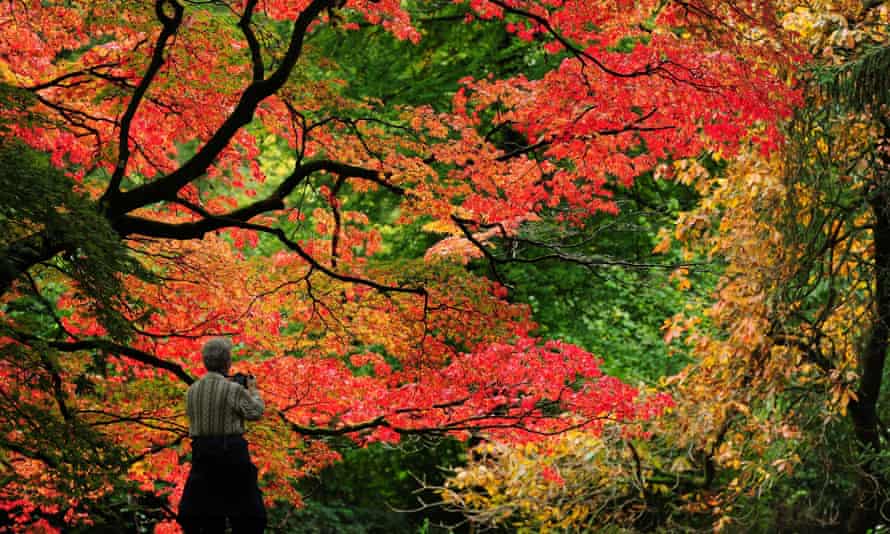Hopes of autumn glory as season arrives early in parts of southern England
Signs of mid-September are already here, which experts predict could create spectacular autumnal colours

The season of mists and mellow fruitfulness is rolling in earlier than usual across parts of the south and south-east of England due to the soggy and sunny summer, according to forestry experts.
Ripening blackberries, sweetening chestnuts and burgeoning forest fruits – typically seasonal hallmarks of autumn normally seen from mid-September – are all evident, said Forestry England, which manages publicly owned forests.
And with them come hopes of a spectacularly colourful autumnal display.
The cold, sunny spring followed by the damp summer have combined to hasten autumn, as Met Office data shows the south and south-east experienced a particularly wet June, July and August, with about double the average rainfall in places.
“This rain, coupled with above average sunshine, has meant that we are already noticing signs of autumn within our forests,” Forestry England said.
At Alice Holt forest, near Farnham in Hampshire, “we are already finding ripe blackberries in the undergrowth, our rowan trees are full of big juicy berry-like fruit, and lots of fungi are popping up on the forest floor,” said Mike Pittock, the head of environment and planning for the organisation’s south district. “These are signs that we would expect to see in mid-September.
“The abundance of rain means all the trees are looking lush and green, but the acorns, conkers and sweet chestnuts are ripening, getting ready for their time to fall.”
Experts predicted that could result in a fine autumn display as the leaves turn, as trees require a healthy balance of sunlight and rain throughout the growing season to produce the sugars that create the autumnal colours in their leaves.
“The conditions that make for a spectacular autumn are a moist growing season followed by a dry autumn with warm sunny days and cool nights,” said Mark Ballard, the curator at Westonbirt arboretum in Gloucestershire. “The rain and the sun we have experienced throughout the spring and summer means that the trees will have been able to produce the sugars which create the colours in their leaves.
“This should mean we see a spectacular autumn display. The length of the display relies heavily on the weather throughout the autumn. Once the autumn season arrives, leaves need time for the buildup of chlorophyll to entirely fade and their dormant pigments to fully take over.”
Forestry England experts said that with a warming climate and change in precipitation patterns, the country could expect to see a change in autumn into the future. “A longer growing season will likely keep trees greener later into the autumn, however the risk of a sudden frost remains, which can cause vegetation to shed their leaves before they reach their full potential,” said Dan Luscombe, the collections manager at Bedgebury pinetum in Kent.
To enhance the richness of autumn colour in its forests, Forestry England said it was working hard to plant lots of different species of trees in many woodlands that will fare well in the climate conditions predicted over the coming decades. “Sycamore, wild cherry, hornbeam, small-leaved lime, and oak, to name a few, should bring a riot of colour to our countryside for visitors to enjoy well into the future,” a spokesperson said.